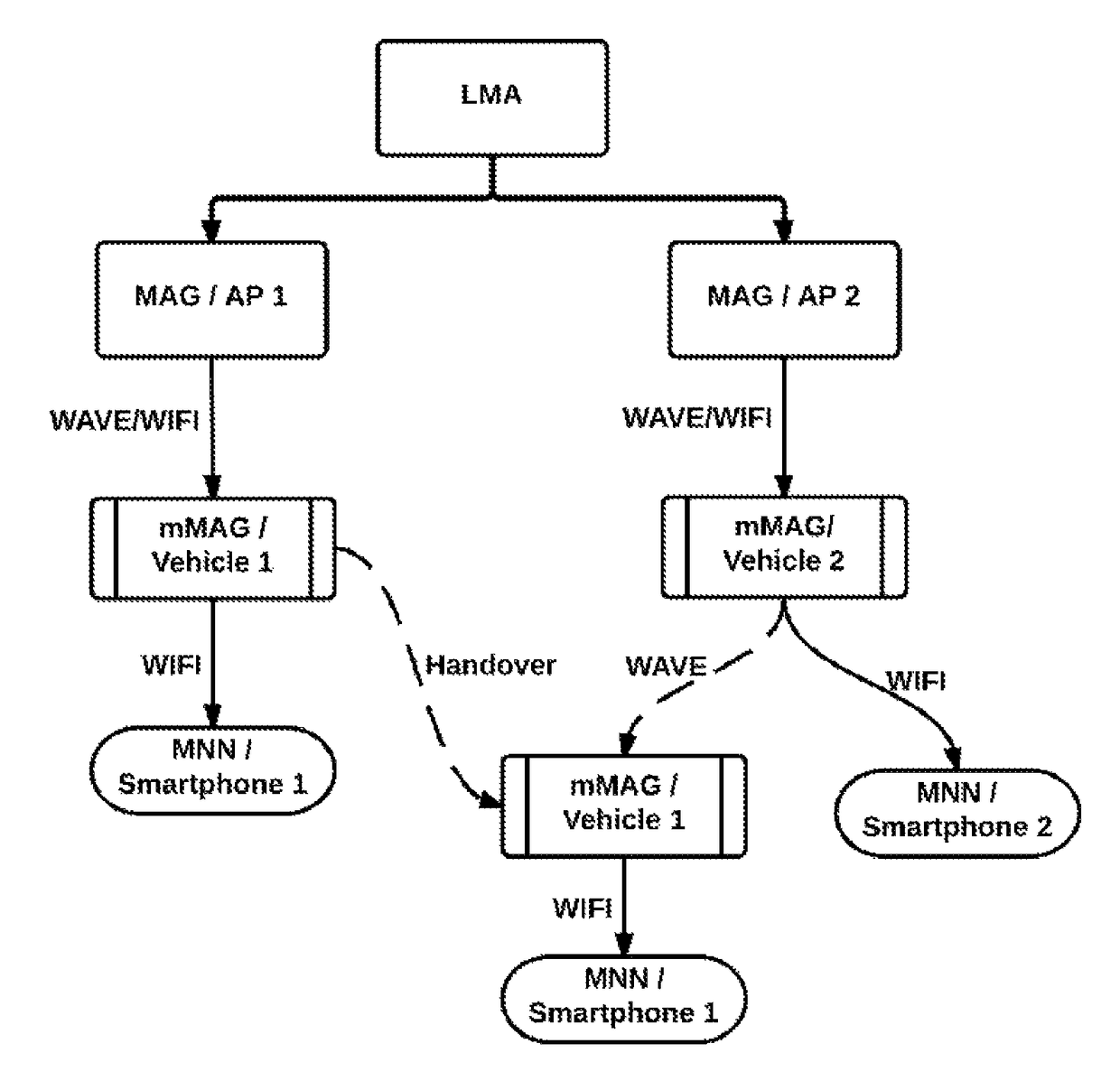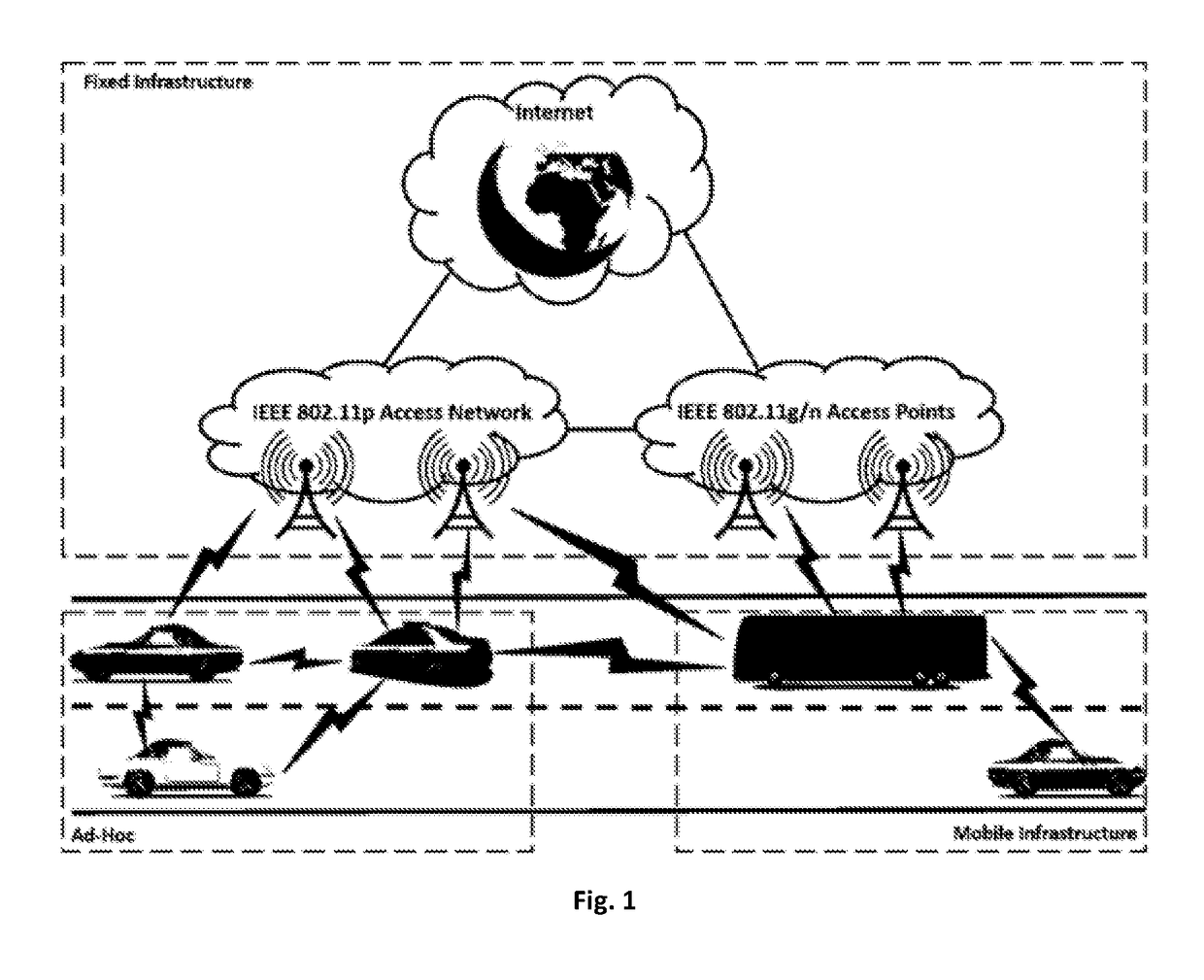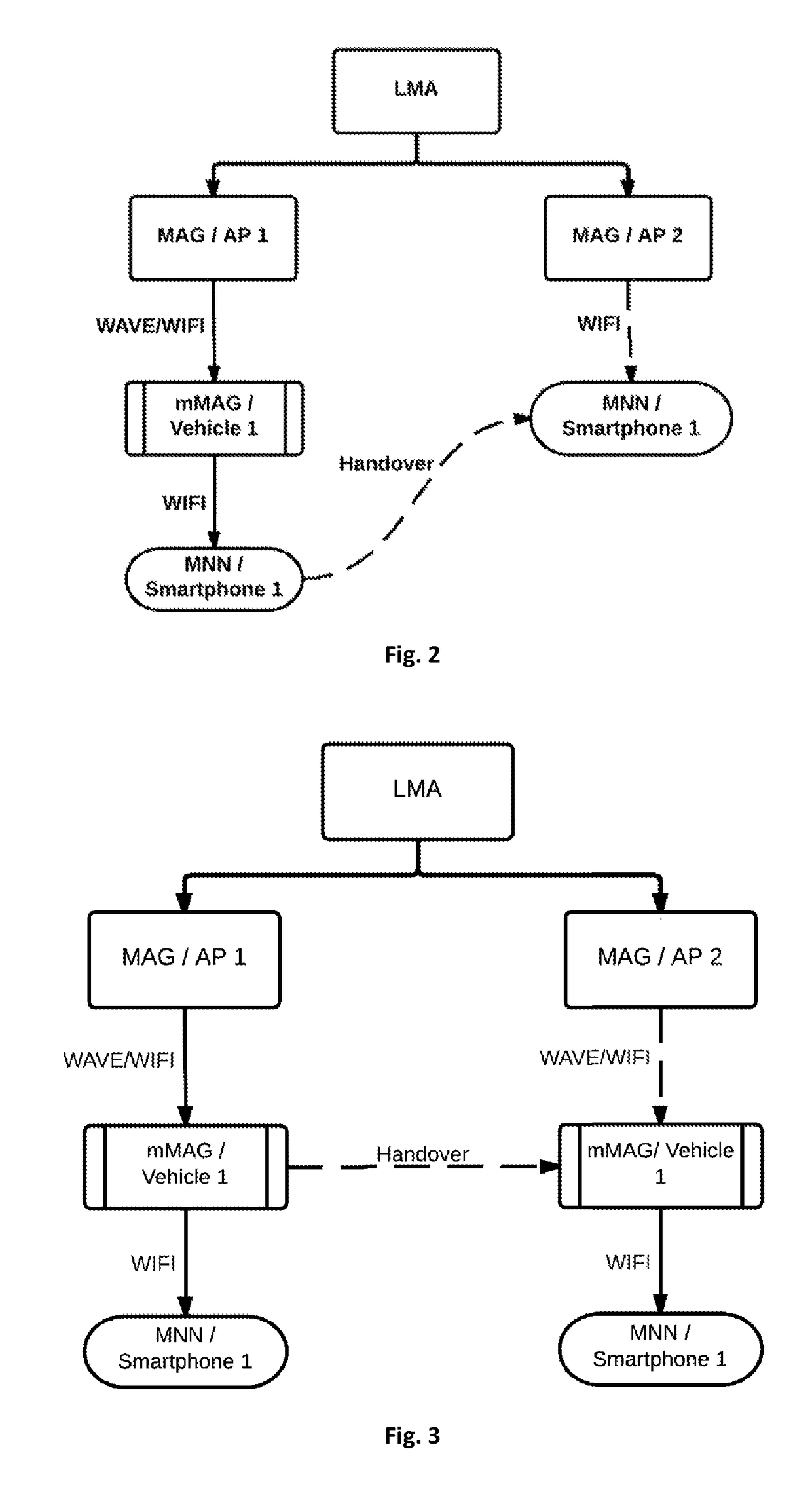Method and system for providing data access to mobile network nodes of a data network
a mobile network and data network technology, applied in the field of digital data networks comprising mobile nodes, can solve the problems of not always providing the best mechanism for a correct application, and achieve the effect of reducing the need for fixed infrastructure, extending the range of connection, and reducing production and maintenance costs
- Summary
- Abstract
- Description
- Claims
- Application Information
AI Technical Summary
Benefits of technology
Problems solved by technology
Method used
Image
Examples
Embodiment Construction
[0110]FIG. 1 shows a representation of the interaction of the vehicles with the fixed infrastructure as well as with other vehicles. The mobile access points, which are the vehicles, will be able to connect to the backbone network through WAVE or Wi-Fi connections and, in the case these ones are not available, through a 3G / LTE connection. The users can connect both by the vehicles through a Wi-Fi connection and through available infrastructure access points. The infrastructure access points can either be Wi-Fi access points or Road Side Units (RSUs), which provide WAVE access points.
[0111]In order to reduce the probability of connection lost a mobility protocol was developed as well as some mobility mechanisms, such as a connection manager. Together, they support the mobile nodes movement between the available access points even if they are transmitting using different technologies. From this, it is possible to achieve some important handover scenarios. FIG. 2 shows a representation...
PUM
 Login to View More
Login to View More Abstract
Description
Claims
Application Information
 Login to View More
Login to View More - R&D
- Intellectual Property
- Life Sciences
- Materials
- Tech Scout
- Unparalleled Data Quality
- Higher Quality Content
- 60% Fewer Hallucinations
Browse by: Latest US Patents, China's latest patents, Technical Efficacy Thesaurus, Application Domain, Technology Topic, Popular Technical Reports.
© 2025 PatSnap. All rights reserved.Legal|Privacy policy|Modern Slavery Act Transparency Statement|Sitemap|About US| Contact US: help@patsnap.com



